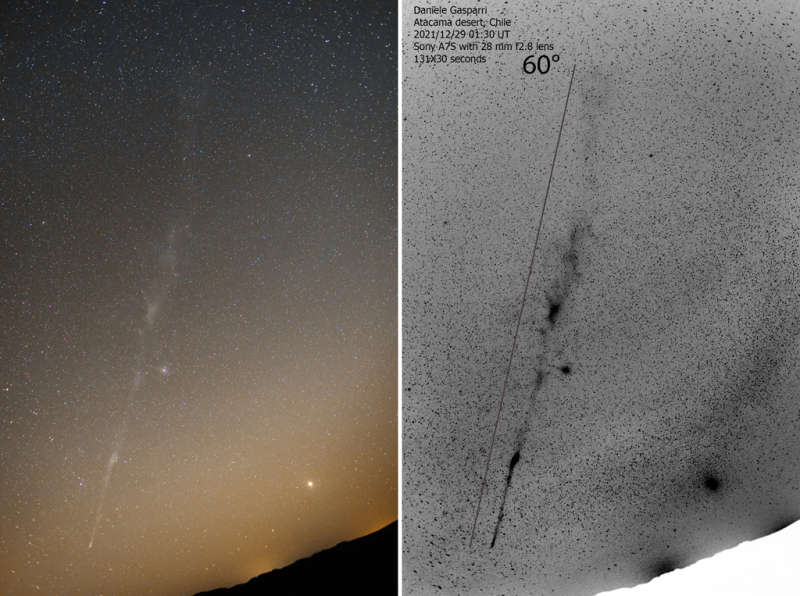Credit & Copyright: Daniele Gasparri
Explanation:
Comet Leonard, brightest comet of 2021,
is at the lower left of these two panels
captured on December 29 in dark Atacama desert skies.
Heading for its perihelion on January 3
Comet
Leonard's visible tail
has grown.
Stacked exposures with a wide angle lens
(also displayed in a reversed B/W scheme for contrast),
trace the complicated ion tail for an amazing 60 degrees, with
bright Jupiter shining near the horizon at lower right.
Material vaporizing
from
Comet Leonard's nucleus,
a mass of dust, rock, and ices about 1 kilometer across,
has produced the long tail of ionized gas fluorescing in the sunlight.
Likely flares on the
comet's nucleus
and buffeting by magnetic fields and the solar wind in recent weeks
have resulted in the tail's irregular
pinched
and twisted appearance.
Still days from its closest approach to the Sun,
Comet
Leonard's activity
should continue.
The comet is
south
of the Solar System's
ecliptic plane as it sweeps through the southern constellation Microscopium.
1999 2000 2001 2002 2003 2004 2005 2006 2007 2008 2009 2010 2011 2012 2013 2014 2015 2016 2017 2018 2019 2020 2021 2022 2023 2024 2025 |
Yanvar' Fevral' Mart Aprel' Mai Iyun' Iyul' Avgust Sentyabr' Oktyabr' Noyabr' Dekabr' |
NASA Web Site Statements, Warnings, and Disclaimers
NASA Official: Jay Norris. Specific rights apply.
A service of: LHEA at NASA / GSFC
& Michigan Tech. U.
|
Publikacii s klyuchevymi slovami:
comet tail - kometnye hvosty - komety
Publikacii so slovami: comet tail - kometnye hvosty - komety | |
Sm. takzhe:
Vse publikacii na tu zhe temu >> | |
